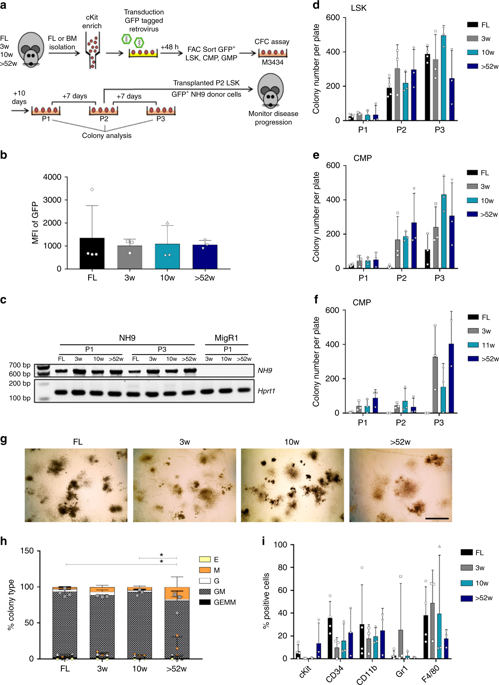当前位置:
X-MOL 学术
›
Nat. Commun.
›
论文详情
Our official English website, www.x-mol.net, welcomes your
feedback! (Note: you will need to create a separate account there.)
Age-specific biological and molecular profiling distinguishes paediatric from adult acute myeloid leukaemias.
Nature Communications ( IF 14.7 ) Pub Date : 2018-12-11 , DOI: 10.1038/s41467-018-07584-1 Shahzya Chaudhury 1, 2 , Caitríona O'Connor 1 , Ana Cañete 1 , Joana Bittencourt-Silvestre 1 , Evgenia Sarrou 1 , Áine Prendergast 1 , Jarny Choi 3 , Pamela Johnston 4 , Christine A Wells 3 , Brenda Gibson 2 , Karen Keeshan 1
Nature Communications ( IF 14.7 ) Pub Date : 2018-12-11 , DOI: 10.1038/s41467-018-07584-1 Shahzya Chaudhury 1, 2 , Caitríona O'Connor 1 , Ana Cañete 1 , Joana Bittencourt-Silvestre 1 , Evgenia Sarrou 1 , Áine Prendergast 1 , Jarny Choi 3 , Pamela Johnston 4 , Christine A Wells 3 , Brenda Gibson 2 , Karen Keeshan 1
Affiliation

|
Acute myeloid leukaemia (AML) affects children and adults of all ages. AML remains one of the major causes of death in children with cancer and for children with AML relapse is the most common cause of death. Here, by modelling AML in vivo we demonstrate that AML is discriminated by the age of the cell of origin. Young cells give rise to myeloid, lymphoid or mixed phenotype acute leukaemia, whereas adult cells give rise exclusively to AML, with a shorter latency. Unlike adult, young AML cells do not remodel the bone marrow stroma. Transcriptional analysis distinguishes young AML by the upregulation of immune pathways. Analysis of human paediatric AML samples recapitulates a paediatric immune cell interaction gene signature, highlighting two genes, RGS10 and FAM26F as prognostically significant. This work advances our understanding of paediatric AML biology, and provides murine models that offer the potential for developing paediatric specific therapeutic strategies.
中文翻译:

年龄特定的生物学和分子谱分析将小儿和成人急性髓细胞性白血病区别开来。
急性髓细胞性白血病(AML)影响所有年龄段的儿童和成人。AML仍然是癌症儿童的主要死亡原因之一,对于AML儿童而言,AML复发是最常见的死亡原因。在这里,通过在体内对AML进行建模,我们证明了AML是通过起源细胞的年龄来区分的。幼细胞产生髓样,淋巴样或混合表型急性白血病,而成年细胞仅产生AML,潜伏期较短。与成人不同,年轻的AML细胞不会重塑骨髓基质。转录分析通过免疫途径的上调来区分年轻的AML。对儿童儿科AML样本的分析概括了儿科免疫细胞相互作用的基因特征,突出了两个基因RGS10和FAM26F对预后具有重要意义。
更新日期:2018-12-11
中文翻译:

年龄特定的生物学和分子谱分析将小儿和成人急性髓细胞性白血病区别开来。
急性髓细胞性白血病(AML)影响所有年龄段的儿童和成人。AML仍然是癌症儿童的主要死亡原因之一,对于AML儿童而言,AML复发是最常见的死亡原因。在这里,通过在体内对AML进行建模,我们证明了AML是通过起源细胞的年龄来区分的。幼细胞产生髓样,淋巴样或混合表型急性白血病,而成年细胞仅产生AML,潜伏期较短。与成人不同,年轻的AML细胞不会重塑骨髓基质。转录分析通过免疫途径的上调来区分年轻的AML。对儿童儿科AML样本的分析概括了儿科免疫细胞相互作用的基因特征,突出了两个基因RGS10和FAM26F对预后具有重要意义。











































 京公网安备 11010802027423号
京公网安备 11010802027423号